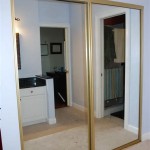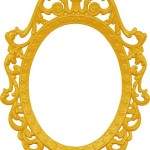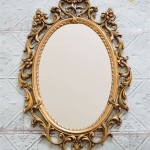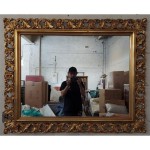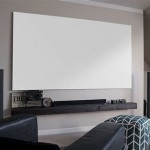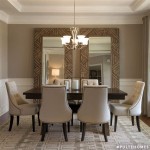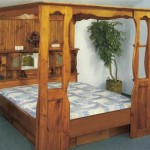How to Glue a Frame to a Mirror: A Comprehensive Guide
Attaching a frame to a mirror can elevate its aesthetic appeal and integrate it seamlessly into a room's decor. Whether refurbishing an old mirror or customizing a new one, understanding the proper techniques for gluing a frame ensures a secure and lasting bond. This guide details the necessary steps and considerations for successfully gluing a frame to a mirror.
Choosing the Right Adhesive
Selecting the appropriate adhesive is crucial for a successful frame-to-mirror bond. Several factors influence this choice, including the frame material, mirror size, and environmental conditions. Consider the following options:
1. Neutral Cure Silicone Sealant: This adhesive offers excellent adhesion to various surfaces, including glass and wood, and remains flexible, accommodating slight movements caused by temperature fluctuations. It is also moisture-resistant, making it suitable for bathroom applications.
2. Mirror Mastic: Specifically designed for bonding mirrors, mirror mastic provides a strong, permanent hold. It typically comes in a caulking-tube format, facilitating easy application. Ensure the specific mastic chosen is compatible with the frame material.
3. Construction Adhesive: Certain construction adhesives can effectively bond frames to mirrors. However, carefully check the product specifications to confirm its suitability for use with glass and the specific frame material. Avoid solvent-based adhesives that might damage the mirror's silvering.
Preparing the Mirror and Frame
Proper preparation is essential for optimal adhesion. Follow these steps to ensure the surfaces are ready for bonding:
1. Clean the Mirror: Thoroughly clean the mirror's surface with a glass cleaner and a lint-free cloth to remove dust, fingerprints, and any residues. A clean surface allows for maximum contact between the adhesive and the mirror.
2. Clean the Frame: Clean the frame's bonding surface, removing any dust, dirt, or old adhesive. If working with a wooden frame, lightly sanding the contact area can enhance adhesion.
3. Dry Both Surfaces: Ensure both the mirror and the frame are completely dry before applying the adhesive. Moisture can interfere with the bonding process and weaken the adhesion.
Applying the Adhesive
Applying the adhesive correctly is crucial for a secure and even bond. Follow these guidelines for optimal results:
1. Bead Size: Apply a continuous bead of adhesive around the perimeter of the mirror's back, where the frame will make contact. The bead size should be sufficient to provide a strong bond without excessive squeeze-out.
2. Spacing: If using dabs of adhesive instead of a continuous bead, space them evenly around the perimeter. Ensure there are enough dabs to support the frame's weight and create a secure bond.
3. Avoiding the Mirror Edge: Keep the adhesive slightly inset from the mirror's edge. This prevents the adhesive from squeezing out onto the visible front of the mirror when the frame is applied.
Positioning and Securing the Frame
Once the adhesive is applied, carefully position and secure the frame to ensure proper alignment and a strong bond:
1. Alignment: Carefully position the frame onto the mirror, ensuring it is centered and aligned correctly. Adjust the frame's position quickly as most adhesives begin to set relatively fast.
2. Applying Pressure: Apply even pressure to the frame for several minutes, ensuring full contact between the frame and the adhesive. This helps create a strong and consistent bond across the entire contact area.
3. Supporting the Frame: Depending on the size and weight of the frame, it may be necessary to support the frame while the adhesive cures. Use temporary supports, such as masking tape or clamps, to hold the frame in place until the adhesive reaches its full strength.
Curing the Adhesive
Allowing sufficient curing time is critical for a lasting bond. Follow these guidelines for proper curing:
1. Curing Time: Refer to the adhesive manufacturer's instructions for the recommended curing time. This typically ranges from several hours to 24 hours or more, depending on the specific adhesive and environmental conditions.
2. Environmental Conditions: Ideal curing conditions involve moderate temperatures and low humidity. Avoid exposing the bonded mirror and frame to extreme temperatures or excessive moisture during the curing process.
3. Avoiding Disturbances: Do not move or disturb the mirror and frame during the curing period. This can disrupt the bonding process and weaken the adhesion.
Safety Precautions
When working with adhesives, it is essential to take necessary safety precautions:
1. Ventilation: Work in a well-ventilated area to minimize exposure to adhesive fumes. Open windows and doors or use a fan to ensure adequate air circulation.
2. Eye Protection: Wear safety glasses to protect your eyes from adhesive splashes or debris.
3. Gloves: Wear gloves to protect your skin from contact with the adhesive.
Choosing the Right Frame
While the focus here is on the gluing process, selecting the right frame in the first place is also important:
1. Weight: Consider the weight of the frame. A heavy frame will require a stronger adhesive and potentially more support during curing.
2. Material Compatibility: Ensure the frame material is compatible with the chosen adhesive. Some adhesives might not bond well to certain plastics or metals.
3. Size and Fit: Carefully measure the mirror and select a frame that fits appropriately, providing sufficient overlap for a secure bond.

Diy Stick On Mirror Frame Sawdust Sisters

Mirror Frame Diy How To Update A Basic Bathroom Our Faux Farmhouse

Diy Stick On Mirror Frame Sawdust Sisters

Easiest Way To Frame A Mirror House Mix

Mirror Frame Diy How To Update A Basic Bathroom Our Faux Farmhouse

Diy Bathroom Mirror Frame With Molding The Happier Homemaker

Diy Bathroom Mirror Frame Without Removing Clips Her Happy Home

How To Frame A Mirror Sand And Sisal

Easy Diy Tutorial Adding Trim Around A Giant Mirror For Ers

Diy Bathroom Mirror Frame For Under 10 O Hayley Blog

